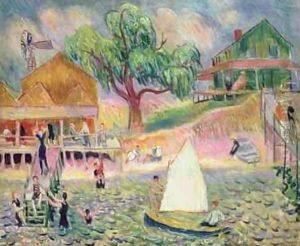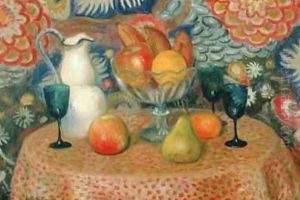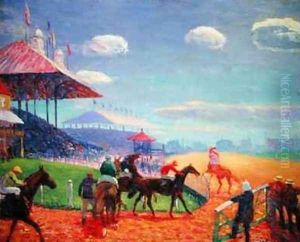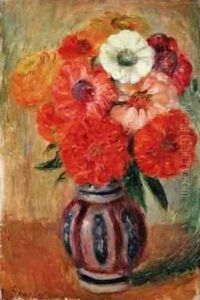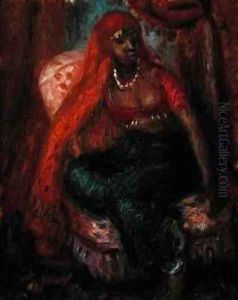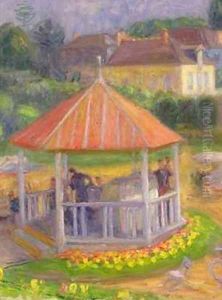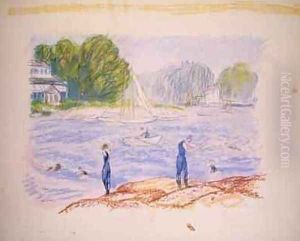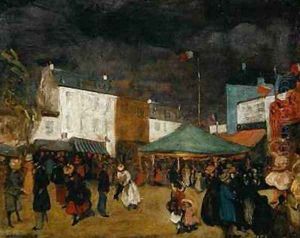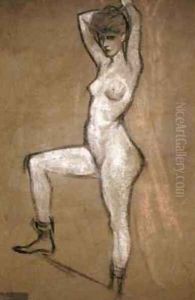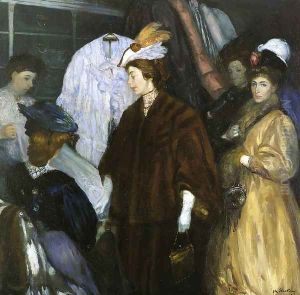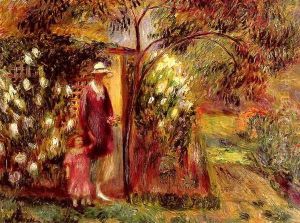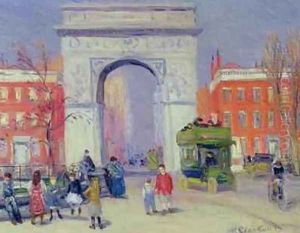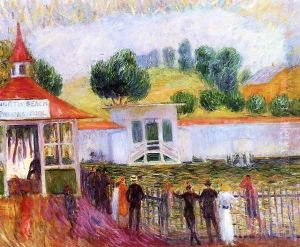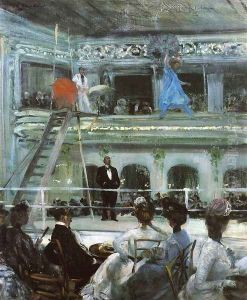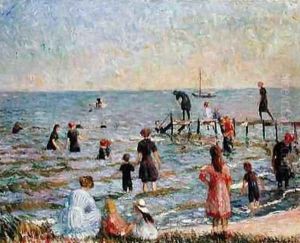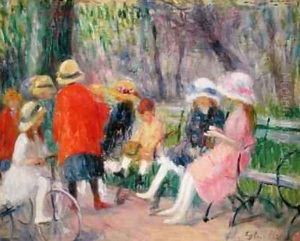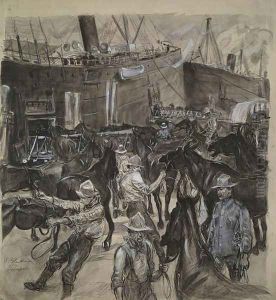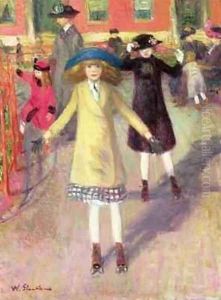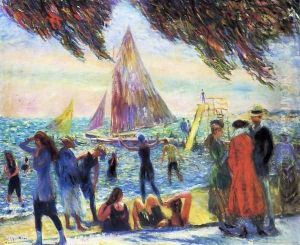William Glackens Paintings
William James Glackens was an influential American realist painter and one of the founders of the Ashcan School of American art. Born on March 13, 1870, in Philadelphia, Pennsylvania, Glackens began his career as an illustrator, working for various newspapers and magazines, including McClure's Magazine. His early work as an illustrator influenced his later paintings, imbuing them with a narrative quality and a keen eye for the details of everyday life.
Glackens studied at the Pennsylvania Academy of the Fine Arts under the tutelage of Thomas Anshutz, and later, he traveled to Europe, where he was deeply influenced by the work of the Impressionists. This experience would play a crucial role in his development as a painter, as he began to incorporate brighter colors and looser brushwork into his work, moving away from the darker tones and more detailed style of his early illustrations.
In the early 20th century, Glackens became associated with a group of artists known as 'The Eight', which included Robert Henri, George Luks, Everett Shinn, and John Sloan, among others. This group was known for their gritty urban subjects and their desire to portray the realities of life in New York City, as opposed to the idealized images common in American art at the time. In 1908, The Eight exhibited their works together, in what would become known as the landmark Ashcan School exhibition. This exhibition challenged the traditional art establishment by showcasing works that depicted everyday scenes and the lives of ordinary people.
Throughout his career, Glackens continued to evolve as an artist, exploring different subjects and experimenting with his style. He was particularly noted for his vibrant street scenes and lively portrayals of leisure activities, such as parks and beaches, which captured the dynamic spirit of American life in the early 20th century. Despite his association with the Ashcan School, Glackens's work was also influenced by French Impressionism, and he is often remembered for his ability to blend these two distinct styles in his paintings.
Glackens was also a member of the American Academy of Arts and Letters and played an important role in the art world of his time, including serving as an advisor for the art collection of his friend and patron, Albert C. Barnes. William Glackens passed away on May 22, 1938, in Westport, Connecticut, leaving behind a legacy as one of the most important American artists of the early 20th century. His work continues to be celebrated for its vibrant depiction of American life and its contribution to the development of modern American art.

